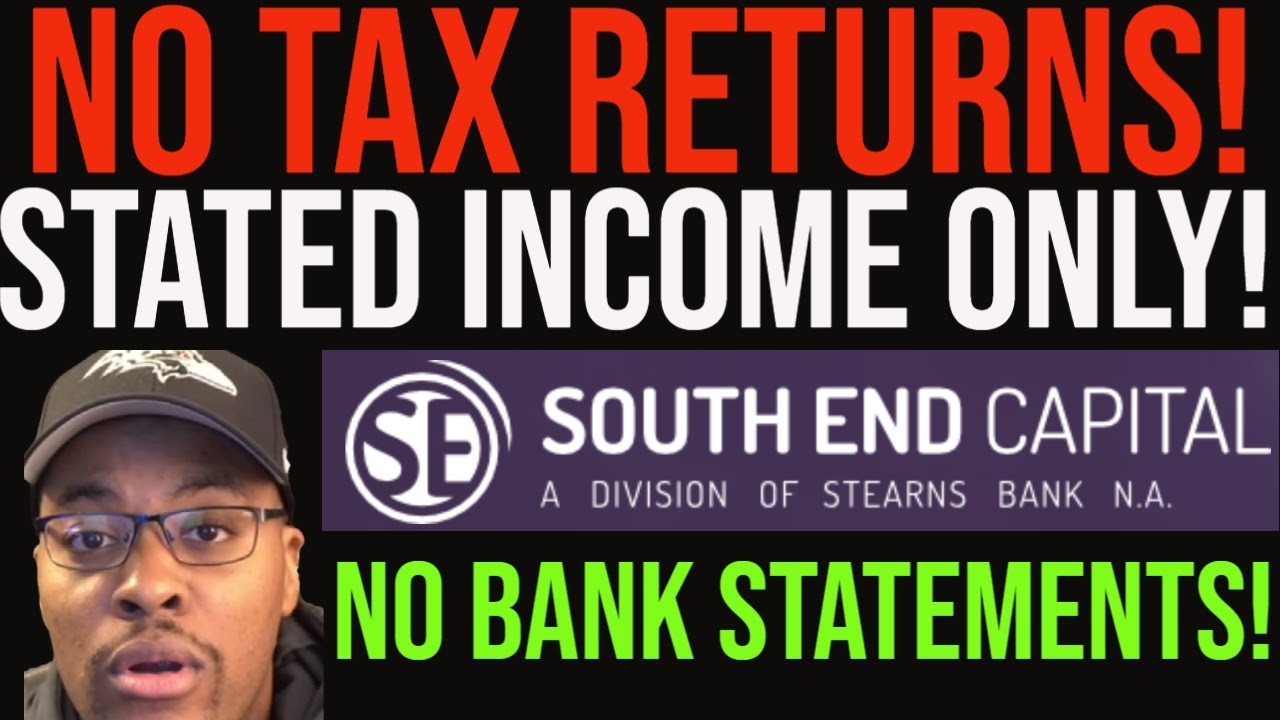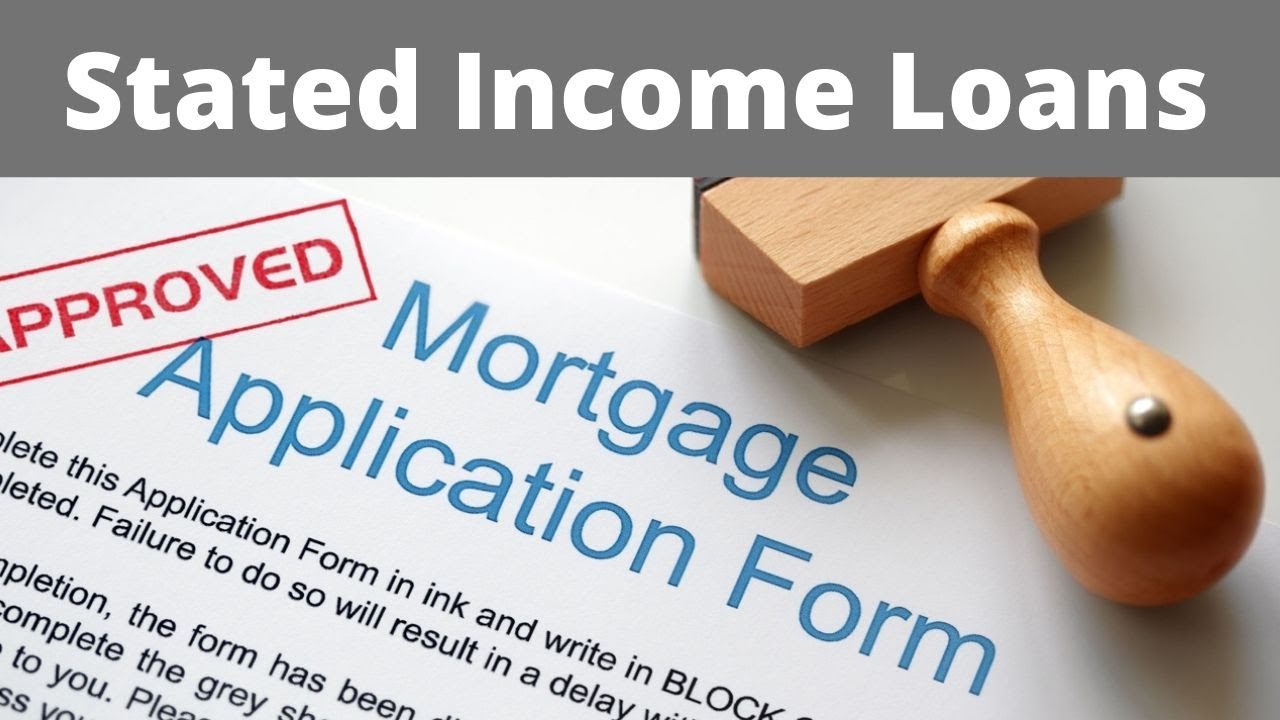Stated income loans have long been a subject of interest and controversy in the world of finance. They offer a route to homeownership for those who may not fit the neat boxes required by traditional mortgage lenders. But are they really a ticket to easy approval? Let’s dig in, shall we?

Unpacking Stated Income Loans: A Modern Financial Instrument for Borrowers
Stated income loans, the once go-to product for self-employed folks and others without conventional income documentation, have undergone significant changes since their heyday pre-2008 crisis. The spotlight on these loans has been both illuminating and scalding, revealing both flexibility for borrowers and potential perils for the lending ecosystem.
Historically, these loans were synonymous with a casual nod to income verification. However, fast forward to the post-Dodd-Frank regulatory scape of 2024, lenders are now checking under the hood, requiring real proof before handing over the keys to the funds. Still, with regulation comes reinvention, and these loans have once again emerged, morphing into a creature that toes the line between borrower convenience and regulatory compliance.
Primarily serving the entrepreneurial spirits, gig economy champions, and those with complex income streams, stated income loans have resurfaced with a focus on safeguarding both parties involved in the lending dance.

Stated Income Loans Versus Traditional Mortgages: Weighing Your Options
When it comes to deciding between a stated income loan and a traditional mortgage, it’s a bit like choosing between a trusty sedan and a zippy convertible; both will get you there, but the experiences are worlds apart. Conventional loans are grounded in proofs—W-2s, paystubs, and the reassuring predictability of a regular paycheck—whereas stated income loans are all about reading between the lines of a bank statement or sifting through the pages of tax returns.
Borrowers may lean towards stated income loans due to their unconventional earning patterns, making it a challenge to present the usual dossier of wage evidence. Here, credit scores can play the hero or the villain, swinging the pendulum of approval odds, often necessitating a sturdier financial portfolio to make up for the lack of traditional income proof.

| Feature | Description | Relevant Dates | Documentation Required | Legal Considerations |
|---|---|---|---|---|
| Definition | A loan type where borrowers state their income during the application process. | |||
| Traditional Stated Income | Borrowers simply state their income without verification from the lender. | Pre-2010 | None | Legal before 2010; now largely prohibited for owner-occupied properties. |
| Post-Dodd-Frank Stated Income | Borrowers must provide documentation to verify their income. | Post-2010 | Bank statements, tax returns, financial documents | Must comply with the Dodd-Frank Act; must demonstrate ability to repay. |
| Applicability for Owner-Occupied Properties | Illegal for owner-occupied properties to obtain mortgage loans solely based on stated income without verification. | As of July 17, 2024 | Income documentation or asset verification | In accordance with Dodd-Frank Act requirements. |
| Proof of Income Requirement | Proof of income is a standard requirement for mortgage and rental agreements, currently reflecting changes in stated income loans. | As of June 15, 2024 | Paystubs, tax returns, W-2, bank statements | Required to comply with lender and legal standards. |
| Stated Income-Stated Asset (SISA) Loans | Allows borrowers to declare income and assets without verification by the lender (Alt-A loan application). | None (declaration only) | May still exist in some forms for investment properties but under stricter scrutiny. | |
| Benefits | Quicker application process, less paperwork (historically). Provided increased flexibility for self-employed or non-traditional earners. | Prior to reform | May offer more streamlined process for qualified borrowers with assets. | |
| Limitations | Restricted by law for owner-occupied properties; must fully document financial capability to repay the loan. | Post-Dodd-Frank enactment | Comprehensive financial documentation | Regulatory compliance is critical to avoid legal issues. |
The Mechanics of Stated Income Loans: How They Work in Today’s Market
Navigating the loan application process for stated income loans has become a journey with a few extra pit stops. Come 2024, borrowers must furnish to the scent of bank statements or the lustre of tax documents as substitute sentinels, proving their capacity to reimburse the loan. And while you’re assembling your pile of documents, know that lenders are – metaphorically – putting on their glasses, scrutinizing your financial life with a Guardian of the Galaxy-level of attention.
Lenders’ perspectives have shifted gears. It’s less about taking your word for it and more about playing detective with your financial narratives. They’re unraveling your bank stories, dissecting your tax plotlines, and essentially seeking the reassurance that your economic tale is one of feasibility, not fantasy.

Assessing the Risks: A Critical View of Stated Income Loans’ Stability
Risks? Well, they’re no strangers to the realm of stated income loans. With the borrower’s financial cloak unraveled to less scrutiny than traditional loans, the peril is a two-way street. Lenders and borrowers can find themselves at the not-so-sweet end of the deal if the plot hits an unexpected twist.
Regulation, however, has risen as a knight in financial armor, with regulatory changes like the Dodd-Frank Act tightening the loose ends, ensuring that only borrowers with true capability – think income or assets that are no shy violets – can court these loans.
Some borrowers have lived to tell the tale of successful escapades with stated income loans, while others have archives that echo lessons of caution, much like an economic ‘Aesop’s Fable’.

Stated Income Loans: Easy Approval or a Misconception?
“Easy approval? You’ve got to be yolking!” or so goes the vein of egg Jokes, but when it comes to stated income loans, this isn’t something to crack jokes about. The truth has nuances; approvals aren’t handed out like flyers for a pizza joint. Borrower profiles boast solidity in creditworthiness, flaunting bank statements as badges of income prowess. Reach out to resources like California loan Companies for a closer look into successful applications shored up by responsible financial standing.
With regulations tightening like corsets, the “easy” in approval has turned into diligent evaluation, ensuring that the loans don’t become precarious financial stilts for borrowers or lenders.

Interest Rates and Fees: The Cost of Convenience in Stated Income Loans
Drift into the topic of interest rates associated with stated income loans and you’ll spot higher numbers than with conventional loans, a testament to the axiom, ‘convenience has its price.’ Compared to the interest rates of conventional loans, these figures can prompt a raised eyebrow or two.
Additional costs and fees also loom on the horizon, so borrowers must factor in these financial gusts when opting for the convertible ride of a stated income loan. Think of these extra pennies as tickets to the convenience show. Seeking advice from a great American mortgage company might provide more detailed forecasts of this financial weather.
How Stated Income Loans Shape the Future of Real Estate Investment
For real estate investors, stated income loans can be as crucial as a trusty pocketknife. They’re a tool offering quick maneuverability in property markets, especially for investors rich in assets but with income that’s a maverick. With real estate investing, rapid moves can mean the difference between a deal and a dud.
These loans may influence property values as investors find nimble paths to acquisitions. Buying patterns could see a shift, with a pivot toward flexibility and speed, much like a sleek market ninja stealthily making moves.
Stated Income Loans: Expert Strategies for a Successful Application
If you’re aiming for approval, you’ll need more than a cat’s nine lives; you require a strategy. Enhancing your chances starts with a thorough financial portrait, where your bank statements and tax returns do the talking. Seek expert advice, perhaps with a little help from a loan solution center, to navigate the labyrinth of application do’s and don’ts. Financial advisors too come armed with best practices, equipping you with the wisdom to handle stated income loans wisely, not unlike a sage in a fiscal fable.
As for predictions, regulations and requirements are the sea tides—one moment calm, the next in uproar. Riding these waves requires vigilance, adaptability, and a sturdy financial ship.
Crafting the Optimal Financial Portfolio with Stated Income Loans
Stated income loans aren’t lone wolves; they thrive best within the pack of a well-crafted financial portfolio. They can balance out the risks like a trapeze artist in a financial circus, provided you’re the kind of ringleader who knows exactly when to make each move.
Synergize them with other financial instruments with the finesse of a maestro. Ensure your borrowing decisions hum a melody of prudence, not a requiem of financial recklessness.
Paving the Way Forward: Embracing Financial Flexibility with Stated Income Loans
As the credit landscape unveils its 2024 form, stated income loans may come to embody financial flexibility’s new avatar- like the coming of age story for the credit world. Lending practices and eligibility could transform, setting the stage for an evolved borrower-lender relationship. This could signal a novel era where stated income loans are wielded with care, emerging as a deft financial tool toward the responsible pursuit of homeownership.
To wrap up, remember that these loans are no magic beans, but they’re not financial tightropes either. When leveraged with sagacity, they can be conduits to homeownership and investment prosperity. Embrace this insight as you traverse the complex yet rewarding terrain of mortgage options. Stated income loans, while demanding a keen financial acumen, can offer enriching returns for the meticulous borrower.
As we journey through today’s mortgage landscape, seasoned with a pinch of Suze Orman’s wisdom and a dash of Robert Kiyosaki’s practicality, let’s move forward responsibly, alert to the cadence of the ever-evolving financial beat. And for those with a fire in their belly to delve deeper or embrace a chuckle or two, resources like Github Chatgpt and egg jokes stand ready to serve, each in its own unique way.
Can you get a loan with stated income?
Sure thing! Let’s dive right in.
What’s true about stated income loans today?
Can you get a loan with stated income?
Heads up, folks! While snagging a loan on just your word was a breeze back in the day, nowadays getting a loan with stated income is like finding a needle in a haystack – tricky, but not entirely impossible. Lenders are now super cautious and usually ask for proof of income to avoid a financial fiasco.
Can I get a Heloc with stated income?
What’s true about stated income loans today?
Oh boy, let me tell you – stated income loans today are like the Bigfoot of the finance world; they’re talked about but rarely seen. After the mortgage crisis, lenders tightened the reins, so these elusive loans have made a comeback in a more controlled fashion, targeting mainly self-employed borrowers under stricter terms.
How is a stated income loan different from a traditional mortgage?
Can I get a HELOC with stated income?
Pulling a rabbit out of a hat might seem easier than getting a HELOC with stated income these days. Most lenders want concrete proof of income to green-light your application, but some niche lenders might entertain the idea if you’ve got a stellar credit score and hefty equity in your home.
Do banks do stated income loans?
How is a stated income loan different from a traditional mortgage?
It’s like comparing apples and oranges! A stated income loan winks at your actual income and focuses more on your credit score and assets, while a traditional mortgage goes full Sherlock Holmes, investigating your income through tax returns, W-2s, and the whole nine yards.
What loan does not verify income?
Do banks do stated income loans?
Banks, those sticklers for details, generally give stated income loans the cold shoulder since the mortgage meltdown. However, a handful of financial entities might dare to dance with them, catering mainly to self-employed individuals with more hoops to jump through.
How do you qualify for a stated income mortgage?
What loan does not verify income?
Ever hear of No-Doc loans? They’re pretty much the financial world’s Batman – operating in the shadows, not verifying income, and serving borrowers with solid assets and credit. But remember, they’re not as common as they used to be, so finding them is a bit of a crusade.
Do stated income mortgages still exist?
How do you qualify for a stated income mortgage?
Qualifying for a stated income mortgage is like trying to hit a bullseye in a windstorm – doable but demanding. You’ll need good to excellent credit, a sizable down payment, and often a lower debt-to-income ratio, not to mention you’ll have to dig around for a lender willing to take the plunge.
How to get a ninja loan?
Do stated income mortgages still exist?
Believe it or not, stated income mortgages haven’t ridden off into the sunset just yet. They’ve resurfaced like a phoenix from the ashes, albeit in a limited, more scrutinized form, primarily targeting the self-employed who can show they’re good for the money without traditional income proof.
What disqualifies you for a HELOC?
How to get a ninja loan?
Psst… trying to snag a NINJA (No Income, No Job, and Assets) loan is like trying to pull off a heist – it’s a relic from the past and virtually extinct. If by some chance you find a lender offering them, prepare for sky-high interest rates and stringent conditions. Still interested? It’s a serious game of lender-roulette.
How do I get a HELOC with no proof of income?
What disqualifies you for a HELOC?
Whoops! Several deal-breakers can disqualify you from a HELOC, such as a low credit score, not enough equity in your home, a high debt-to-income ratio, or unstable employment. Any of these factors can cause lenders to show you the door, quicker than a cat on a hot tin roof.
Can you get HELOC without proof of income?
How do I get a HELOC with no proof of income?
So, you want a HELOC with no proof of income? You’re skating on thin ice, but it’s not game over yet. Some lenders might play ball if you’ve got a knockout credit score and loads of equity in your home, but be prepared – they’ll likely put you through the wringer with additional caveats.
How does stated income work?
Can you get HELOC without proof of income?
Tough nut to crack, but yes, occasionally you can get a HELOC without proof of income. Niche lenders could be your holy grail if you’ve got other aces up your sleeve, like a pristine credit history and significant home equity. It’s a rare find, so get ready to do some digging!
What is a Sisa loan?
How does stated income work?
Stated income rolls out the red carpet for borrowers who can’t document their income the traditional way. You state your income, cross your heart and hope to qualify, banking on a solid credit score and enough assets to catch the lender’s eye. It’s all about trust, but with a safety net for the lender.
What is a stated income loan What is a fully documented loan?
What is a SISA loan?
Heads up! A SISA loan or Stated Income Stated Asset loan takes your word for it – you state your income and assets, no questions asked. It’s like saying, “trust me,” to the lender, but after the financial shake-up, this kind of loan has become as rare as an albino elephant.
What income is used to qualify for a loan?
What is a stated income loan What is a fully documented loan?
Well, well, well, let’s break it down. A stated income loan relies on your word of honor regarding your bucks, whereas a fully documented loan is all about the paper trail – pay stubs, W-2s, tax returns, you name it. It’s like the difference between a pinky promise and sealing the deal with a notary – one’s more handshake, the other’s full on contract.
Can I get a loan without stable income?
What income is used to qualify for a loan?
When you’re qualifying for a loan, lenders take a gander at your gross monthly income – that’s your moola before taxes and deductions. They’re all about the stability and consistency of your paychecks, be it from a 9-5 gig, a side hustle, or alimony. They want to know you can pay up when the rubber meets the road.
How much of a loan can I qualify for with my income?
Can I get a loan without stable income?
Landing a loan without stable income is like trying to catch fish with your bare hands – possible, but you’ll need to jump through some serious hoops. Lenders might entertain your application if you offset the shaky income with stellar credit, a hefty down payment, or significant assets. But no promises – it’s an uphill battle!
Does income affect loan approval?
How much of a loan can I qualify for with my income?
Crack open the calculator – the loan amount you can qualify for largely hinges on your income, debt, and the mysterious ways of the lender’s algorithms. It’s typically a slice of your pie, ensuring you’re not biting off more than you can chew financially. Be prepared; they’ll fit the loan to your wallet like a tailored suit.


